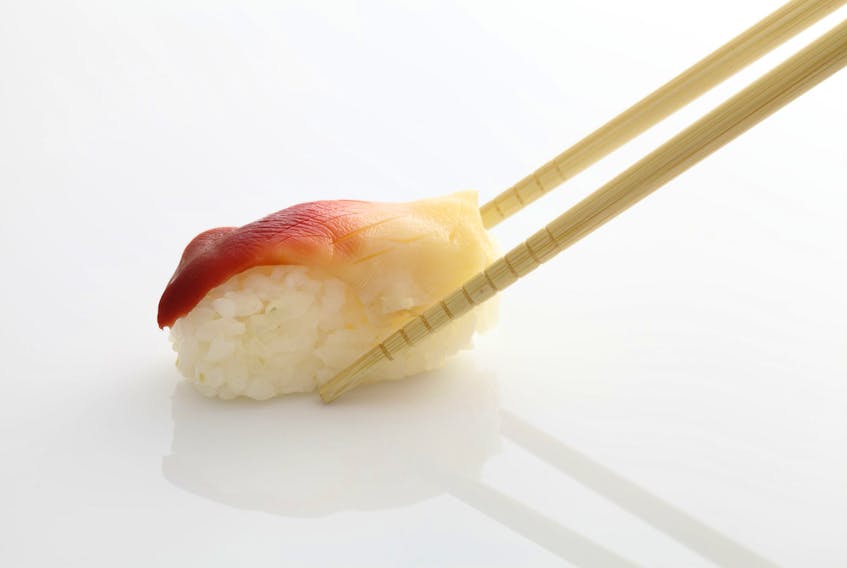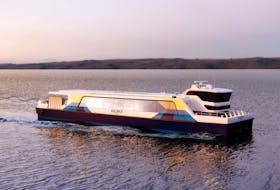You can imagine someone inventing it in their basement.

The concept is, on the face of it, ridiculous: huge, multi-million-dollar ships with giant water hoses that are used to break up sediments on the ocean floor and expose deeply buried Arctic surf clams, which are then collected by a pair of 12-tonne dragged dredges that hold the clams in mesh nets. (The latest ship, the Belle Carnell, cost $65 million.)
All for a species that is most likely to pop up as a high-end sushi or sashimi choice.
The harvesting method is the part of the surf clam business that isn’t much in the news. What is in the news is that the federal government has broken up Clearwater Seafoods’ complete monopoly on the clam fishery, allowing a new Indigenous partnership into the lucrative business, and potentially threatening the livelihoods of workers at Clearwater’s Grand Bank plant.
The truth is, though, that the hydraulic dredges that harvest the clams are 1940s technology and sounds a lot like using a bulldozer to harvest potatoes.
DFO described the clam fishery like this in the 2014 integrated management plan: “The offshore clam fishery has been operating on the Scotian Shelf since 1986 and on the Grand Banks since 1989. The fishery has developed into a vertically integrated industry employing approximately 350 people with annual sales exceeding $50 million. The offshore clam fishery is managed on the basis of a Total Allowable Catch for Arctic surfclam and ocean quahog, divided into enterprise allocations, with an unlimited bycatch of northern propellerclam, Greenland cockles and other non-quota molluscs.”
The truth is, though, that the hydraulic dredges that harvest the clams are 1940s technology and sounds a lot like using a bulldozer to harvest potatoes.
“Possibly, because it represents a relatively specialized sector of the fishing industry, this gear type largely escaped the tremendous surge of environmental effects research on mobile bottom fishing gears that was witnessed in the 1990s. This is despite the fact that hydraulic dredges produce the most dramatic, immediate effect on seabed topography of any gear type,” a study in the journal Continental Shelf Research said in 2003.
“At present, three factory freezer vessels participate year-round in this fishery, which has annual sales of $30–50M Canadian. Working at depths between 50 and 80 (metres), these vessels deploy paired hydraulic dredges, each approximately 4 m wide and weighing 12 tonnes. It is estimated that the total area of seabed disturbed annually by the three vessels is on the order of several hundred kilometres square.”
The study showed that the dredge marks were substantially intact even three years after they were made.
Benthic species — bottom-dwelling invertebrates — recover quickly, other research suggests. And the fact that it’s no longer economic to harvest the clams once more than 60 per cent of an area has been covered in dredge tracks, DFO says, means, “at least 40-50 per cent of the bottom remains undredged, which serves as a recruitment base during the fallow phase of the fishery.”
Another study, in the ICES Journal of Marine Science in 2005, looked at the effect on bottom life: “The dredges captured 33 invertebrate and two fish taxa, although 80 per cent of the catch biomass comprised propeller clams and echinoderms. Immediately after dredging, most macrofaunal species decreased in abundance, with the greatest declines inside dredge furrows (which covered 68 per cent of the area inside the dredged boxes). Large numbers of propeller clams were excavated to the seabed surface, with a large proportion showing massive damage.” (It’s worth pointing out that, after the 2005 study was done, the clam industry began harvesting and marketing propeller clams and Greenland cockles.)
But the effects on the surf clams themselves was remarkable: “Dredging resulted in pronounced, sustained reductions in biomass (up to 67 per cent) of the target bivalves with no signs of recovery after two years,” the study says.
Smaller surf clams weren’t coming back quickly, either: “Recruitment of target bivalves (1-mm shell length) was very low throughout the experimental area during this interval.”
The fishery, as bizarre as it sounds, is considered to be environmentally sustainable. But that doesn’t take away from the sheer ridiculousness of the concept: hundreds of millions of dollars’ worth of vessels and plants, millions of dollars of sales every year, and the bulldozing of huge sections of the ocean floor. Oh, and bare-knuckle struggles between companies and communities.
All for one part of an ocean clam, the sweet-tasting digging foot that’s eaten raw as hokkigai.
We live in a peculiar world.
Russell Wangersky’s column appears in 39 SaltWire newspapers and websites in Atlantic Canada. He can be reached at [email protected] — Twitter: @wangersky.









